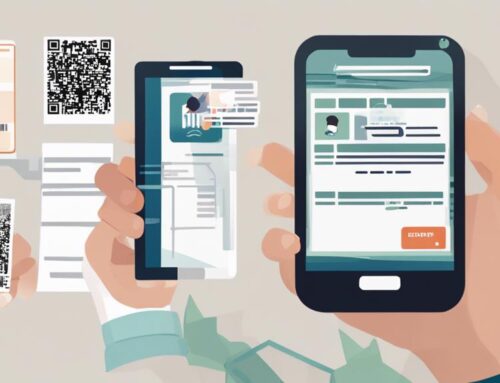Picture this: a mobile data capture training session where your team is fully engaged, actively participating, and gaining valuable skills to enhance their data collection process. But how do you ensure your team is well-prepared and equipped to excel in this digital age? Let’s explore practical strategies and effective methods to empower your team with the necessary expertise to master mobile data capture seamlessly.
Identify Training Needs
To effectively train your team on mobile data capture, the initial step is to identify the specific training needs. Assessing your team’s current skills and knowledge levels is crucial in pinpointing skill gaps that need to be addressed. Utilizing assessment techniques such as quizzes, practical exercises, or surveys can help in evaluating where your team stands in terms of mobile data capture proficiency.
By identifying these skill gaps, you can tailor your training program to focus on areas where improvement is needed the most. This targeted approach ensures that your team receives training that is both relevant and impactful. Additionally, understanding the specific training needs of your team allows you to allocate resources efficiently, maximizing the effectiveness of the training program.
Taking the time to assess and identify training needs sets a solid foundation for developing a comprehensive training plan that addresses the specific requirements of your team. This initial step is essential in ensuring that your team is equipped with the necessary skills to excel in mobile data capture.
Develop a Training Plan
After identifying the training needs of your team in mobile data capture, the next step is to develop a structured training plan that aligns with these requirements. A well-rounded training plan should incorporate a mix of role-playing exercises and interactive simulations to enhance the learning experience. Role-playing exercises allow team members to practice real-life scenarios in a controlled environment, helping them develop their skills and confidence in using mobile data capture tools effectively. Interactive simulations provide a hands-on approach for team members to engage with the technology, making the learning process more dynamic and engaging.
When developing your training plan, consider the specific needs and skill levels of your team members. Tailor the plan to address any knowledge gaps and ensure that the training methods chosen are suitable for the target audience. By incorporating role-playing exercises and interactive simulations into your training plan, you can create a comprehensive learning experience that will equip your team with the necessary skills to excel in mobile data capture.
Select Training Resources
When selecting training resources for your team’s mobile data capture training, it is crucial to consider the specific needs and objectives of the training program. Interactive modules and hands-on workshops are excellent resources to enhance your team’s skills in mobile data capture. Interactive modules allow team members to engage actively with the content, reinforcing learning through quizzes, simulations, and multimedia elements. These modules can be accessed remotely, providing flexibility for team members to learn at their own pace.
Hands-on workshops provide practical experience in using mobile data capture tools and software. These workshops offer a collaborative learning environment where team members can work together to solve real-world data capture challenges. By combining interactive modules with hands-on workshops, your team can develop a comprehensive understanding of mobile data capture processes and best practices.
When selecting training resources, ensure they align with your team’s proficiency levels and learning styles. By incorporating a mix of interactive modules and hands-on workshops, you can create a dynamic and effective training program for your team’s mobile data capture needs.
Schedule Training Sessions
As you move forward with the training program for mobile data capture, the next step involves scheduling training sessions. It is essential to create a structured timetable that accommodates all team members and provides ample time for interactive activities and hands-on practice. Consider the availability of participants and aim to schedule sessions at times when everyone can attend without disruptions.
Interactive activities are crucial to engage team members and reinforce their understanding of mobile data capture concepts. Plan sessions that include group discussions, quizzes, and practical exercises to encourage active participation and knowledge retention. Additionally, incorporate hands-on practice sessions where team members can apply their learning in a simulated environment using mobile data capture tools.
When scheduling training sessions, ensure that there is a balance between theoretical instruction and practical application. Allocate sufficient time for team members to practice using mobile data capture tools independently and seek clarification on any challenges they encounter. By structuring training sessions effectively, you can maximize learning outcomes and prepare your team for successful mobile data capture implementation.
Conduct the Training
To effectively conduct the training on mobile data capture, begin by structuring the sessions to focus on practical application and hands-on exercises. Incorporate interactive simulations to engage your team in real-world scenarios, allowing them to practice using mobile data capture tools in a simulated environment. This hands-on approach will enhance their understanding and proficiency in utilizing the technology effectively.
Furthermore, team role play can be a valuable tool during training sessions. Assign different roles to team members, such as data capturer, data reviewer, and data analyst, to simulate the workflow and collaboration needed in actual data capture processes. This exercise will help team members understand their responsibilities, improve communication, and streamline the data capture workflow.
Frequently Asked Questions
What Are the Best Practices for Troubleshooting Common Data Capture Issues?
Experiencing data capture issues? Ensure user training covers device operation, app functionalities, and troubleshooting basics. Emphasize data accuracy through regular validation checks. Encourage team communication for quick issue resolution. Streamline processes for efficiency.
How Can Team Members Ensure Data Security and Compliance During Capture?
To ensure data security and compliance during capture, enforce data encryption protocols and provide comprehensive compliance training. Make it a priority to safeguard information by utilizing encryption tools and reinforcing regulatory guidelines through targeted training sessions.
Are There Any Recommended Tools for Data Validation and Quality Control?
To ensure data accuracy, utilize data validation tools for error checks. Implement quality control measures to maintain data integrity. Regularly review and validate data entries. Streamline processes with automated validation tools. Enhance accuracy and reliability of captured data.
Can Mobile Data Capture Be Integrated With Existing Software Systems?
Yes, mobile data capture can be integrated with existing software systems, but it may present integration challenges and compatibility issues due to varying system requirements and data transfer limitations. Proper assessment and planning are key.
How Can We Measure the Effectiveness of Our Team’s Data Capture Skills?
To measure your team’s data capture skills effectively, implement performance metrics and skill assessments. Utilize various training methods tailored to individual needs. Incorporate feedback mechanisms for continuous improvement and track progress over time to ensure skill development.




